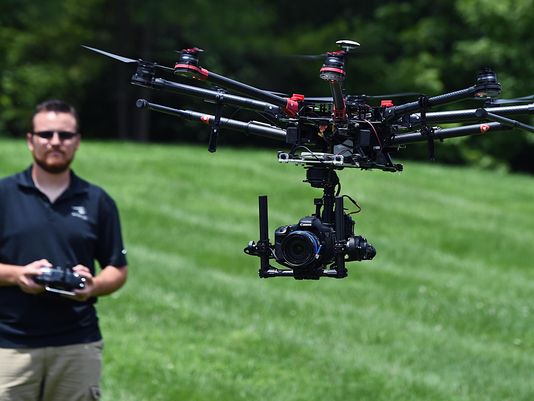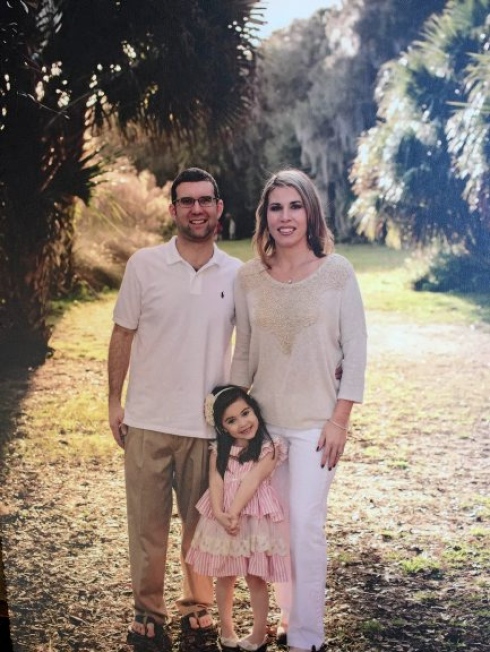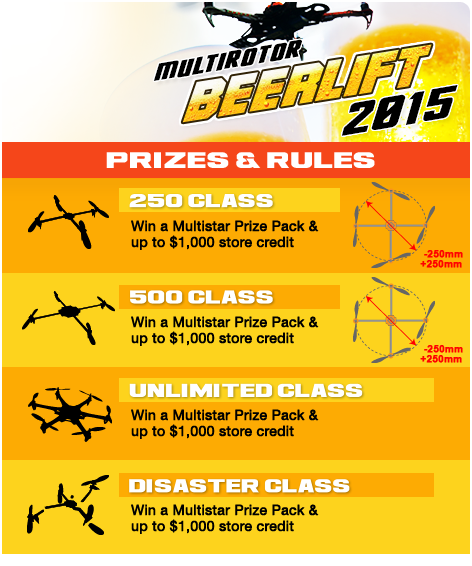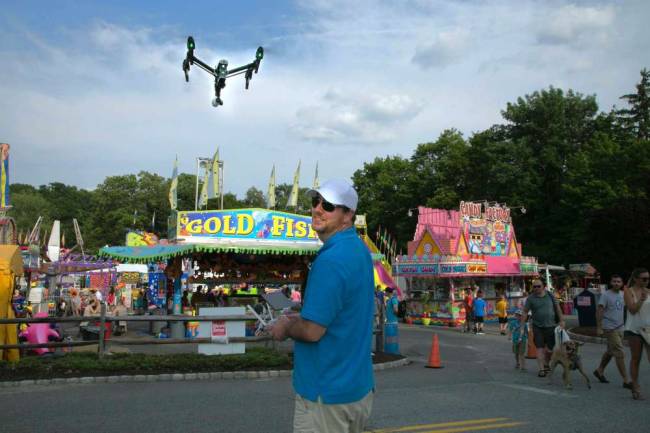
Jordan Buie
The collective buzz of the octocopter’s tiny rotors was about as loud as a lawn mower.
The camera mounted beneath the small, unmanned aerial vehicle focused on Spencer Valdez, and the copter turned casually and flew above the treeline before returning and hovering in front of him.
Valdez’s fingers were on the controls, but he says one day they might not be.
The co-founder of Franklin-based Snaproll Media believes unmanned aerial vehicles, more commonly known as drones, will change the world in the next 10 years, taking on several jobs once completed by humans in person.
“We are only tapping into a portion of what drones can do,” Valdez said after a drone demonstration on July 11, “just a few of their uses.”
The predictions of the 25-year-old Valdez and his Snaproll co-founder Preston Ryon might not carry much weight if the company they founded in Williamson County six years ago were not now at the forefront of the emerging commercial drone industry.
In September 2014, Snaproll Media LLC became one of the first six companies in the United States to receive an exemption from the Federal Aviation Administration to fly drones for commercial use in public airspace, a strong headstart given that companies like CNN and Amazon only have exemptions to test them.
Just before the demonstration in Franklin, Valdez reclined on a sofa in an unassuming warehouse on Mallory Station Road and discussed the future.
Ryon phoned in from a movie set in Atlanta. The new members of their team, former Oracle executive Steve Brugman and former Hospital Corporation of America executive Robert England sat beside Valdez.
For Valdez and Ryon, 30, they say a unique set of circumstances led them to put a camera on a remote-controlled helicopter when few others were doing it.
“It just made sense”
Brugman, now Snap-roll’s CEO, recalls pulling out a notebook during the first meeting he and England had with Valdez and Ryon and asking them to go over who they had worked for in the past. He said that by the time they finished, he had filled the page with a who’s who list of production companies.
“I was shocked at what these two young men had accomplished in so little time, and at the progression of it,” he said.
Brugman and England were not long ago the new owners of a struggling internet service provider in Nashville, the Nexus Group, where they partnered, remodeled and sold the company to a private equity firm in October 2014.
They heard about the “two young men they should know about” through an accountant in Franklin, and a meeting was arranged in January 2015, where the two founders shared their story.
Valdez and Ryon met at a Lewisburg, Tenn., airport in 2006 and hit it off. For the next three years, they bonded over flying.
Toward the end of that period, Valdez had taken on a photo hobby that earned him extra cash and toyed with remote-controlled helicopters on the side.
“I was taking RC helicopters and building camera mounts for them,” he said. “I was taking video and working on it to make it smoother and more stable.”
Meanwhile, Ryon was a corporate pilot and project manager for a development company. He was taking pictures from the air for developers while he flew over their sites in a full-sized helicopter. When he compared the images he captured with those Valdez took, Ryon said saw an opportunity.
“I realized the cost difference for him to put a camera on a drone,” Ryon said. “I saw that we could do the same thing with a 10-pound helicopter. We could get crowds, do shots of buildings. That was key for me.”
In 2009, they started Snaproll Media LLC.
The gigs came in mainly by word of mouth.
First they were doing real estate, then low-budget music videos, then bigger names — Rodney Atkins, Josh Thompson, Taylor Swift, Tim McGraw.
As the jobs got bigger and the equipment fancier, so did the warehouse. Valdez purchased welding equipment and remodeled the drones and camera mounts for more stability.
By the time they had started flying with $20,000 worth of cameras on board, they were in a league of their own.
“We started realizing, ‘We’re the only ones doing this,’ ” Ryon said. “There were maybe two or three other companies flying cameras for a while.”
This led to four years of globetrotting for Valdez and Ryon, jumping from continent to continent for high-profile productions.
“They had this kind of courage to stand up to immense pressure, and I think they had youth to thank for that,” Brugman said.
England agreed.
He recounted that one of their first major productions for a country music video, they flew a $20,000 camera over a lake for an aerial shot of the boat.
“I don’t think they even knew if the camera was insured,” said England, a business partner in Snaproll. “That’s more of a risk than I would have taken.”
The FAA and a changing world
In the years since the advent of affordable drone technology, the do’s and don’ts of personal and commercial use has been a veritable mine field for the Department of Transportation administration tasked with policing the skies.
Stories of drones interfering with law enforcement investigations, crossing paths with police helicopters or other aircraft and invading privacy have become more common. In Southern California, for instance, drones have flown over wildfires and interfered with air tankers battling the blazes. There’s even a $75,000 reward in one county for information on who was behind the drone flights.
But drones offer a compelling alternative for many dangerous jobs.
Brugman said that even in the film industry, Snaproll has replaced cranes as much as helicopters.
“When you think about how you have to risk human life to do some of these jobs, it’s hard not to see they are the way to go,” he said.
In February 2015, the FAA proposed a framework that would allow certain small unmanned aircraft to fly legally, for both personal and commercial uses. The restrictions for personal use were lax and said basically don’t fly over people, into restricted airspace or in areas that may be hazardous.
For those wishing to make money flying drones, the bar is higher. The rules require a pilot-in-command to possess a private pilot certificate and have logged 25 hours flying drones. The rules also mandate an additional visual observer.
In June, FAA Deputy Administrator Michael Whitaker said new rules would likely be finalized in the next year that would open drone use to a broad spectrum of companies, so long as regulations are followed.
http://www.tennessean.com/story/news/2015/08/01/franklin-startup-heart-drone-industrys-cutting-edge/30912757/







